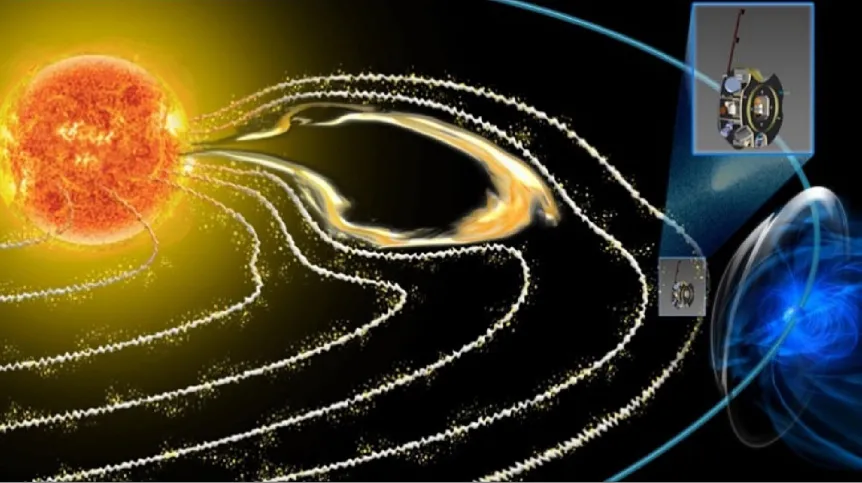
Scientists from the Space Research Centre PAS and the Institute of Optoelectronics of the Military University of Technology will join forces in measurements necessary to design the GLOWS photometer, an instrument for studying solar wind.
Optoelectronics experts will examine interference EUV (extreme ultraviolet) filters and optical surface coatings of the device developed as part of a NASA mission. Preliminary measurements were carried out in 2020 by Col. Professor Przemysław Wachulak (Rector-Commandant of the Military University of Technology), Dr. Andrzej Bartnik and Tomasz Fok from Professor Henryk Fiedorowicz's team.
According to Dr. Maciej Bzowski, head of the GLOWS experiment team from the Department of Solar System Physics and Astrophysics of the Space Research Centre PAS, the research conducted at the Military University of Technology laboratories was necessary for the successful completion of the GLOWS experiment development phases.
DETECTORS FOR STUDYING SOLAR WIND
The GLObal solar Wind Structure (GLOWS) is a photometer for fluorescent observation of heliospheric hydrogen glow in the Solar System. Data obtained thanks to the photometer will enable studying the dependencies of the solar stream on the heliographic width and the interplanetary distribution of interstellar hydrogen.
The GLOWS experiment is part of NASA's heliospheric research missions. The Interstellar Mapping and Acceleration Probe (IMAP) mission assumes that in 2025 a SpaceX rocket will carry the IMAP research satellite into orbit. It will be equipped with ten scientific instruments, one of which - GLOWS - is being developed at the Space Research Centre PAS in cooperation with the Military University of Technology.
This probe will work approx. 1.5 million km from Earth near Lagrange Point L1. This is a point in space where the gravitational forces of the Earth and the Sun balance each other. As a result, a probe placed in its vicinity can more easily maintain a constant position relative to the Earth and the Sun.
DIFFICULT TERRESTRIAL MEASUREMENTS IN A VACUUM
The Military University of Technology laboratories will measure the parameters necessary to design the GLOWS photometer and test its operation. One of such parameters is called bi-directional reflection and scattering function of Lyman alpha radiation. This radiation is reflected from the optical surfaces of the photometer, covered with a special, very black material that strongly absorbs radiation. Researchers will also examine the characteristics of spectral permeability of optical filters that will be used in this device.
In 2020, Col. Professor Przemysław Wachulak, Dr. Andrzej Bartnik and Tomasz Fok measured the radiation transmitted by a filter intended for the selection of electromagnetic radiation near Lyman alpha, on a wavelength of about 120 nm, dispersed at different angles, on the supplied, specially blackened material.
Dr. Maciej Bzowski explains that laboratory measurements in a very far, so-called vacuum ultraviolet are difficult. They require generating the radiation itself, which can be obtained, for example, by a huge power laser pulse production of plasma, which emits this radiation. The measurement itself must take place in a high vacuum.
He said: “The Military University of Technology is one of the few institutions in Poland that have this type of technology and laboratory experience allowing to use it.”
PAP - Science in Poland, Karolina Duszczyk
kol/ ekr/ kap/
tr. RL













